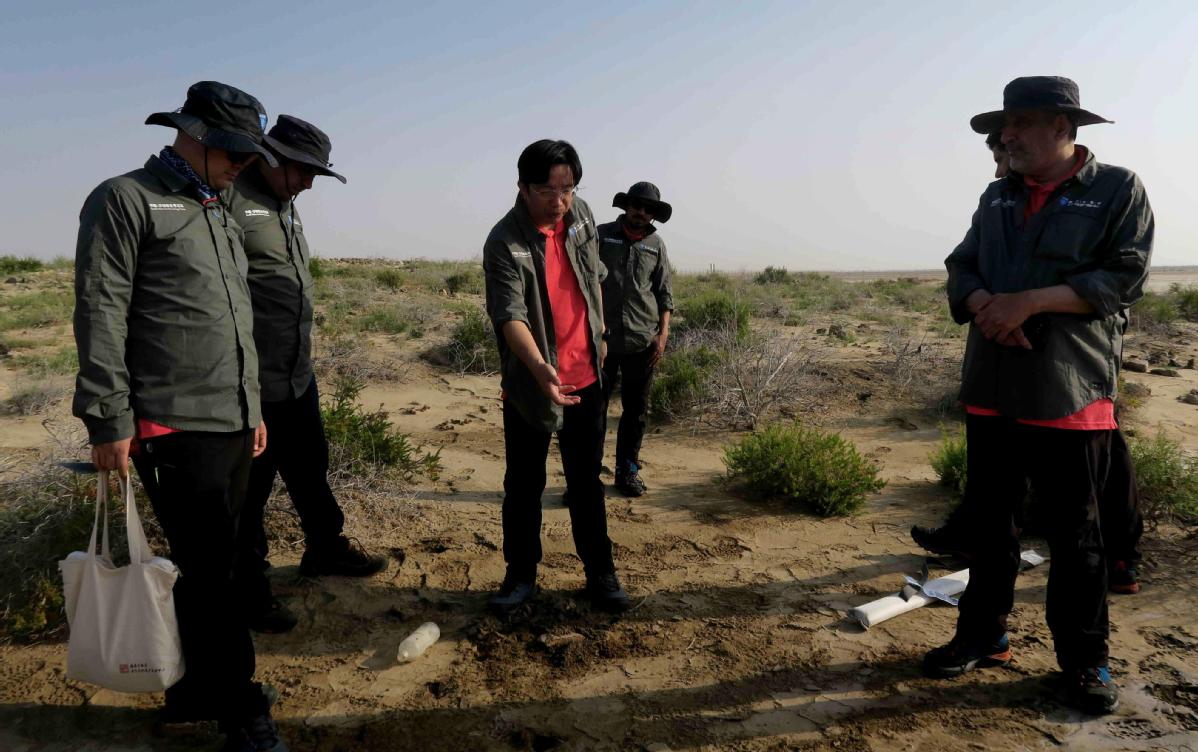Archaeologists dig deep on overseas projects
The Temple of Montu in Luxor, Egypt, has witnessed the ebb and flow of the Nile for more than 3,300 years.
Last year, as a result of this work underground, Li was able to piece together how houses had stood on the western side of the courtyard, matching his earlier findings of those on the northern side.
Excavation work by archaeologists from China and Saudi Arabia is continuing at the port ruins of al-Serrian, near Mecca. [Photo/Xinhua]
"It's unprecedented to have such complete first-hand information on a single family residence in Copan," he said.
Last year, Li also found some signs on the courtyard wall that indicated a passage leading to the "underworld" in Mayan mythology. In 2017, a similar discovery illustrated the death and reincarnation of a Mayan maize god through a wall relief, only previously known to be painted on pottery.
Some newly unearthed articles for daily use may show that the courtyard owners had close links with the royal family.
As with Wang's work in Egypt, Li said the Copan project has offered reference points for comparisons between the Mayan and Chinese civilizations, which have many similarities.
For example, the moon goddess in Mayan mythology is accompanied by a rabbit, serving as a reminder of the Chinese moon goddess Chang'e. The image of a feathered serpent, which frequently appeared in Mayan cultural relics, looks similar to a Chinese dragon, while a common belief in the magical power of jade also made it widely admired among ancient nobles from both civilizations.
"The early-stage settlers in the Americas migrated from Northeast Asia about 15,000 years ago," Li said. "That means we share the same ancestors in the late Paleolithic period (from about 2.7 million to 10,000 years ago). Some key religious beliefs may had been formed then and were inherited by the Maya people and Chinese.
"In some Maya shamanist rituals, priests and rulers had 'dialogues' with ancestors while they were in a trance, very like our prehistoric practices. Further studies will increase our understanding of early Chinese civilization."


